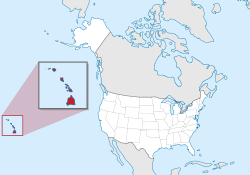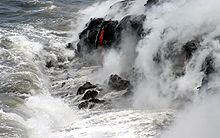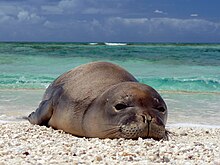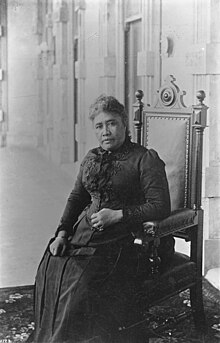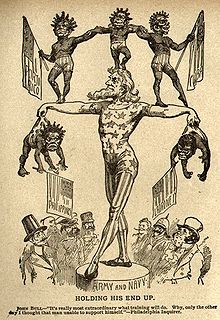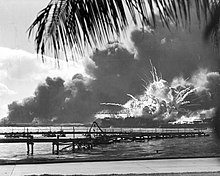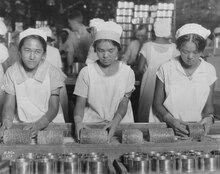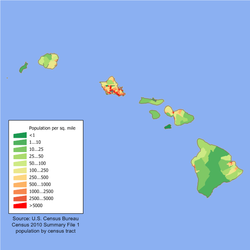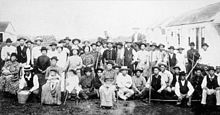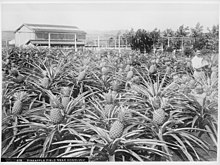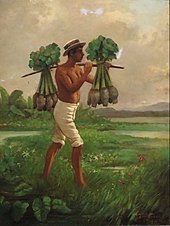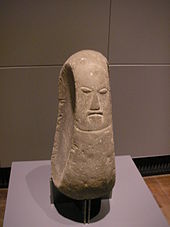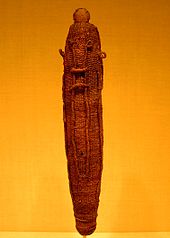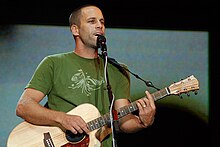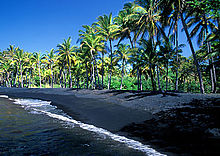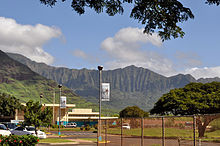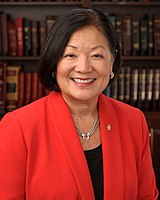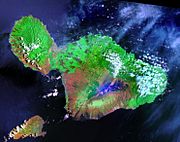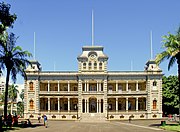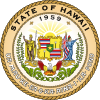If you have never been to Hawaii before the best months of the year to visit (high season is from about December 15 to March 15th. However, October, because one of my daughters had a fall break from her private school while she was growing up we often went during that break and took one of her friends (and or) our two older kids especially between about 2005 and 2013 when my two youngest daughters were growing up. Now they are 28 and 21 and it's a little harder to get them to travel with us like before. But, we went to France in 2009, to Paris and Nice and Monaco and took the TGV which is a train that goes over 200 miles per hour between Paris and Nice parts of the way there. So, it actually is easier and less hassle to take a bullet train from Paris to Nice than to fly between the two. Of course you could always rent a car or a motor home and make the drive too. The Cote D'Azure or Azure Sea on the French Riviera is pretty amazing too.
Anyway, my wife and I are visiting where we honeymooned when we married in December 1995. So, I thought blogging about Hawaii might be kind of fun.
I have lived in Hilo in 1974 and on Maui in 1989 and 1990 and loved both experiences. (However, going to Hilo in August even at age 26 without air conditioning was a bit much even then for me. My first wife and I and our baby moved there in 1974 but we only stayed a few months for a variety of reasons even though she had lived there a year or more at a younger age. But, Hawaii is special to me as a kind of Paradise one can live in or visit. But, if you live there it is a very different thing than vacationing there. IT's entirely different and also it is different any different age you are living there. But, I suppose this is also true wherever you live on earth too.
But, in some ways Hawaii is more of an ideal paradise than anywhere else if you are just going for a few weeks of fun in the sun and the waves in a tropical climate.
I went to Kona side of the Big Island in January 2015 snorkeling mostly with two of my friends then. We had a really amazing experience and even drove the new road over past the mountain sheep over to Hilo over the mountain roads there. I don't think you could do the drive between Kona and Hilo over the mountains in 1974 even though you could then drive up Moana Kea to 14,000 feet in elevation with your car. But, you really don't want to do that unless you have a 4 wheel drive or stick shift and know how to use it because of potential brake fade coming down the steep steep roads from 14,000 feet. Going up can be a problem for some carburetors too but most with fuel injection likely could get up there but coming down is a real problem for most drivers not used to something this extreme if they are not trained how to survive something like this.
So, this is the first time I have been back to the islands since January 2015 and the first time for my wife since 2014 when we came just before our youngest daughter's graduation from High School during Easter Vacation and brought our older daughter and her boyfriend too. This was a really fun trip to Hawaii.
Hawaii - Wikipedia
https://en.wikipedia.org/wiki/Hawaii
Hawaii is the 50th and most recent state to have joined the United States of America, having received statehood on August 21, 1959. Hawaii is the only U.S.
Things to do in Hawaii
Oahu
Honolulu, Waikiki Beach & Pearl Harbo
Coordinates: 21°18′41″N 157°47′47″W
The state encompasses nearly the entire volcanic Hawaiian archipelago, which comprises hundreds of islands spread over 1,500 miles (2,400 km). At the southeastern end of the archipelago, the eight main islands are—in order from northwest to southeast: Niʻihau, Kauaʻi, Oʻahu, Molokaʻi, Lānaʻi, Kahoʻolawe, Maui, and the Island of Hawaiʻi. The last is the largest island in the group; it is often called the "Big Island" or "Hawaiʻi Island" to avoid confusion with the state or archipelago. The archipelago is physiographically and ethnologically part of the Polynesian subregion of Oceania. Hawaii's diverse natural scenery, warm tropical climate, abundance of public beaches, oceanic surroundings, and active volcanoes make it a popular destination for tourists, surfers, biologists, and volcanologists. Because of its central location in the Pacific and 19th-century labor migration, Hawaii's culture is strongly influenced by North American and Asian cultures, in addition to its indigenous Hawaiian culture. Hawaii has over a million permanent residents, along with many visitors and U.S. military personnel. Its capital is Honolulu on the island of Oʻahu. Hawaii is the 8th-smallest and the 11th-least populous, but the 13th-most densely populated of the fifty U.S. states. It is the only state with an Asian plurality. The state's coastline is about 750 miles (1,210 km) long, the fourth longest in the U.S. after the coastlines of Alaska, Florida, and California. ContentsEtymologyThe state of Hawaii derives its name from the name of its largest island, Hawaiʻi. A common Hawaiian explanation of the name of Hawaiʻi is that was named for Hawaiʻiloa, a legendary figure from Hawaiian myth. He is said to have discovered the islands when they were first settled.[12][13]The Hawaiian language word Hawaiʻi is very similar to Proto-Polynesian *Sawaiki, with the reconstructed meaning "homeland".[14] Cognates of Hawaiʻi are found in other Polynesian languages, including Māori (Hawaiki), Rarotongan (ʻAvaiki) and Samoan (Savaiʻi) . According to linguists Pukui and Elbert,[15] "[e]lsewhere in Polynesia, Hawaiʻi or a cognate is the name of the underworld or of the ancestral home, but in Hawaii, the name has no meaning".[16] Spelling of state nameA somewhat divisive political issue arose in 1978 when the Constitution of the State of Hawaii added Hawaiian as a second official state language.[17] The title of the state constitution is The Constitution of the State of Hawaii. Article XV, Section 1 of the Constitution uses The State of Hawaii.[18] Diacritics were not used because the document, drafted in 1949,[19] predates the use of the okina (ʻ) and the kahakō in modern Hawaiian orthography. The exact spelling of the state's name in the Hawaiian language is Hawaiʻi.[b] In the Hawaii Admission Act that granted Hawaiian statehood, the federal government recognized Hawaii as the official state name. Official government publications, department and office titles, and the Seal of Hawaii use the traditional spelling with no symbols for glottal stops or vowel length.[20] In contrast, the National and State Parks Services, the University of Hawaiʻi and some private enterprises implement these symbols. No precedent for changes to U.S. state names exists since the adoption of the United States Constitution in 1789. However, the Constitution of Massachusetts formally changed the Province of Massachusetts Bay to the Commonwealth of Massachusetts in 1780, and in 1819 the Territory of Arkansaw was created but was later admitted to statehood as the State of Arkansas.Geography and environmentThere are eight main Hawaiian islands, seven of which are permanently inhabited. The island of Niʻihau is privately managed by brothers Bruce and Keith Robinson; access is restricted to those who have permission from the island's owners. Access to uninhabited Kahoʻolawe island is also restricted.
Topography
The Hawaiian Islands are located in the North Pacific Ocean
In addition to the eight main islands, the state has many smaller islands and islets. Kaʻula is a small island near Niʻihau. The Northwest Hawaiian Islands is a group of nine small, older islands to the northwest of Kauaʻi that extend from Nihoa to Kure Atoll; these are remnants of once much larger volcanic mountains. Across the archipelago are around 130 small rocks and islets, such as Molokini, which are either volcanic, marine sedimentary or erosional in origin.[32] Hawaii's tallest mountain Mauna Kea is 13,796 ft (4,205 m) above mean sea level;[33] it is taller than Mount Everest if measured from the base of the mountain, which lies on the floor of the Pacific Ocean and rises about 33,500 feet (10,200 m).[34] Geology
Pāhoehoe, or smooth lava, spills into the Pacific Ocean, forming new rock off the coast of the Island of Hawaii.
The last volcanic eruption outside Hawaii Island occurred at Haleakalā on Maui before the late 18th century, possibly hundreds of years earlier.[35] In 1790, Kīlauea exploded; it was the deadliest eruption known to have occurred in the modern era in what is now the United States.[36] Up to 5,405 warriors and their families marching on Kīlauea were killed by the eruption.[37] Volcanic activity and subsequent erosion have created impressive geological features. Hawaii Island has the third-highest point among the world's islands.[38] On the flanks of the volcanoes, slope instability has generated damaging earthquakes and related tsunamis, particularly in 1868 and 1975.[39] Steep cliffs have been created by catastrophic debris avalanches on the submerged flanks of ocean island volcanoes.[40][41] Flora and fauna
Corvus hawaiiensis, the endemic Hawaiian crow (ʻalalā), is extinct in the wild.
The extant main islands of the archipelago have been above the surface of the ocean for fewer than 10 million years; a fraction of the time biological colonization and evolution have occurred there. The islands are well known for the environmental diversity that occurs on high mountains within a trade winds field. On a single island, the climate around the coasts can range from dry tropical (less than 20 inches or 510 millimeters annual rainfall) to wet tropical; on the slopes, environments range from tropical rainforest (more than 200 inches or 5,100 millimeters per year), through a temperate climate, to alpine conditions with a cold, dry climate. The rainy climate impacts soil development, which largely determines ground permeability, affecting the distribution of streams and wetlands.[citation needed] Protected areas
French Frigate Shoals, located in the Northwestern Hawaiian Islands, is protected as part of the Papahānaumokuākea Marine National Monument.
There are three national historical parks; Kalaupapa National Historical Park in Kalaupapa, Molokaʻi, the site of a former leper colony; Kaloko-Honokōhau National Historical Park in Kailua-Kona on Hawaiʻi Island; and Puʻuhonua o Hōnaunau National Historical Park, an ancient place of refuge on Hawaiʻi Island's west coast. Other areas under the control of the National Park Service include Ala Kahakai National Historic Trail on Hawaiʻi Island and the USS Arizona Memorial at Pearl Harbor on Oʻahu. The Papahānaumokuākea Marine National Monument was proclaimed by President George W. Bush on June 15, 2006. The monument covers roughly 140,000 square miles (360,000 km2) of reefs, atolls, and shallow and deep sea out to 50 miles (80 km) offshore in the Pacific Ocean—an area larger than all of the national parks in the U.S. combined.[46] Climate
A true-color satellite view of Hawaii shows that most of the vegetation
on the islands grows on the northeast sides which face the wind. The
silver glow around the southwest of the islands is the result of calmer
waters.[47]
The warmest temperature recorded in the state, in Pahala on April 27, 1931, is 100 °F (38 °C), making it tied with Alaska as the lowest record high temperature observed in a U.S. state.[49] Hawaii's record low temperature is 12 °F (−11 °C) observed in May 1979 on the summit of Mauna Kea. Hawaii is the only state to have never recorded sub-zero Fahrenheit temperatures.[49] Climates vary considerably on each island; they can be divided into windward and leeward (koʻolau and kona, respectively) areas based upon location relative to the higher mountains. Windward sides face cloud cover.[citation needed]
History
The Kingdom of Hawaiʻi was sovereign from 1810 until 1893 when the monarchy was overthrown by resident American and European capitalists and landholders. Hawaii was an independent republic from 1894 until August 12, 1898, when it officially became a territory of the United States. Hawaii was admitted as a U.S. state on August 21, 1959.[51] First human settlement – Ancient Hawaiʻi (800–1778)Based on archaeological evidence, the earliest habitation of the Hawaiian Islands dates to around 300 CE, probably by Polynesian settlers from the Marquesas Islands. A second wave of migration from Raiatea and Bora Bora took place in the 11th century. The date of the human discovery and habitation of the Hawaiian Islands is the subject of academic debate.[52] Some archaeologists and historians think it was a later wave of immigrants from Tahiti around 1000 CE who introduced a new line of high chiefs, the kapu system, the practice of human sacrifice, and the building of heiau.[citation needed] This later immigration is detailed in Hawaiian mythology (moʻolelo) about Paʻao. Other authors say there is no archaeological or linguistic evidence for a later influx of Tahitian settlers and that Paʻao must be regarded as a myth.[citation needed]The history of the islands is marked by a slow, steady growth in population and the size of the chiefdoms, which grew to encompass whole islands. Local chiefs, called aliʻi, ruled their settlements, and launched wars to extend their influence and defend their communities from predatory rivals. Ancient Hawaii was a caste-based society, much like that of Hindus in India.[53] European arrivalSpanish archives contain a chart that depicts islands at the same latitude as Hawaiʻi but with a longitude ten degrees east of the islands. In this manuscript, the island of Maui is named La Desgraciada (The Unfortunate Island), and what appears to be Hawaiʻi Island is named La Mesa (The Table). Islands resembling Kahoolawe, Lanai, and Molokai are named Los Monjes (The Monks).[58] For two-and-a-half centuries, Spanish galleons crossed the Pacific from Mexico along a route that passed south of Hawaiʻi on their way to Manila. The exact route was kept secret to protect the Spanish trade monopoly against competing powers. The 1778 arrival of British explorer James Cook was the first documented contact by a European explorer with Hawaii. Cook named the archipelago as the Sandwich Islands in honor of his sponsor John Montagu, 4th Earl of Sandwich. Cook published the islands' location and rendered the native name as Owyhee. This spelling lives on in Owyhee County, Idaho. It was named after three native Hawaiian members of a trapping party who went missing in that area. The Owyhee Mountains were also named for them.[59]
King Kamehameha receiving Otto von Kotzebue's Russian naval expedition. Drawing by Louis Choris in 1816.
After Cook's visit and the publication of several books relating his voyages, the Hawaiian islands attracted many European visitors: explorers, traders, and eventually whalers, who found the islands to be a convenient harbor and source of supplies. Early British influence can be seen in the design of the flag of Hawaiʻi, which bears the Union Jack in the top-left corner. These visitors introduced diseases to the once-isolated islands, causing the Hawaiian population to drop precipitously.[62] Native Hawaiians had no resistance to Eurasian diseases, such as influenza, smallpox and measles. By 1820, disease, famine and wars between the chiefs killed more than half of the Native Hawaiian population.[63] During the 1850s, measles killed a fifth of Hawaii's people.[64] Historical records indicated the earliest Chinese immigrants to Hawaii originated from Guangdong Province; a few sailors arrived in 1778 with Captain Cook's journey and more arrived in 1789 with an American trader, who settled in Hawaii in the late 18th century. It appears that leprosy was introduced by Chinese workers by 1830; as with the other new infectious diseases, it proved damaging to the Hawaiians.[citation needed] Kingdom of HawaiʻiHouse of Kamehameha
Kamehameha I conquered the Hawaiian Islands and established a unified monarchy across the archipelago.
After Kamehameha II inherited the throne in 1819, American Protestant missionaries to Hawaii converted many Hawaiians to Christianity. They used their influence to end many traditional practices of the people.[66][67] During the reign of King Kamehameha III, Hawai'i turned into a Christian monarchy with the signing of the 1840 Constitution.[68] Hiram Bingham I, a prominent Protestant missionary, was a trusted adviser to the monarchy during this period. Other missionaries and their descendants became active in commercial and political affairs, leading to conflicts between the monarchy and its restive American subjects.[69] Catholic and Mormon missionaries were also active in the kingdom, but they converted a minority of the Native Hawaiian population.[70][71][72] Missionaries from each major group administered to the leper colony at Kalaupapa on Molokaʻi, which was established in 1866 and operated well into the 20th century. The best known were Father Damien and Mother Marianne Cope, both of whom were canonized in the early 21st century as Roman Catholic saints. The death of the bachelor King Kamehameha V—who did not name an heir—resulted in the popular election of Lunalilo over Kalākaua. Lunalilo died the next year, also without naming an heir. In 1874, the election was contested within the legislature between Kalākaua and Emma, Queen Consort of Kamehameha IV. After riots broke out, the United States and Britain landed troops on the islands to restore order. King Kalākaua was chosen as monarch by the Legislative Assembly by a vote of 39 to 6 on February 12, 1874.[73] 1887 Constitution and overthrow preparationsIn 1887, Kalākaua was forced to sign the 1887 Constitution of the Kingdom of Hawaii. Drafted by white businessmen and lawyers, the document stripped the king of much of his authority. It established a property qualification for voting that effectively disenfranchised most Hawaiians and immigrant laborers and favored the wealthier, white elite. Resident whites were allowed to vote but resident Asians were not. As the 1887 Constitution was signed under threat of violence, it is known as the Bayonet Constitution. King Kalākaua, reduced to a figurehead, reigned until his death in 1891. His sister, Queen Liliʻuokalani, succeeded him; she was the last monarch of Hawaiʻi.[74]In 1893, Queen Liliʻuokalani announced plans for a new constitution to proclaim herself an absolute monarch. On January 14, 1893, a group of mostly Euro-American business leaders and residents formed the Committee of Safety to stage a coup d'état against the kingdom and seek annexation by the United States. United States Government Minister John L. Stevens, responding to a request from the Committee of Safety, summoned a company of U.S. Marines. The Queen's soldiers did not resist. According to historian William Russ, the monarchy was unable to protect itself.[75] Overthrow of 1893 – the Republic of Hawaii (1894–1898)
Queen Liliʻuokalani, the last reigning monarch of the Hawaiian Kingdom.
The ʻIolani Palace in Honolulu, formerly the residence of the Hawaiian monarch, was the capitol of the Republic of Hawaii.
Congress conducted an independent investigation, and on February 26, 1894, submitted the Morgan Report, which found all parties, including Minister Stevens—with the exception of the Queen—"not guilty" and not responsible for the coup.[76] Partisans on both sides of the debate questioned the accuracy and impartiality of both the Blount and Morgan reports over the events of 1893.[75][77][78][79] In 1993, the US Congress passed a joint Apology Resolution regarding the overthrow; it was signed by President Bill Clinton. The resolution did not apologize and did not say the overthrow was illegal. It, ""acknowledges that the overthrow of the Kingdom of Hawaii occurred with the active participation of agents and citizens of the United States and further acknowledges that the Native Hawaiian people never directly relinquished to the United States their claims to their inherent sovereignty as a people over their national lands, either through the Kingdom of Hawaii or through a plebiscite or referendum". [79] Annexation – the Territory of Hawaii (1898–1959)
In 1899 Uncle Sam balances his new possessions which are depicted as savage children. The figures are Puerto Rico, Hawaii, Cuba, Philippines and "Lad robes" (the Mariana Islands).
In 1900, Hawaii was granted self-governance and retained ʻIolani Palace as the territorial capitol building. Despite several attempts to become a state, Hawaii remained a territory for sixty years. Plantation owners and capitalists, who maintained control through financial institutions such as the Big Five, found territorial status convenient because they remained able to import cheap, foreign labor. Such immigration and labor practices were prohibited in many states.[85][86]
The Japanese attack on Pearl Harbor in 1941 was the primary event that galvanized the United States into entering World War II.
Oʻahu was the target of a surprise attack on Pearl Harbor by Imperial Japan on December 7, 1941. The attack on Pearl Harbor and other military and naval installations, carried out by aircraft and by midget submarines, brought the United States into World War II. Political changes of 1954 – the State of Hawaii (1959–present)
Prior to the postwar labor movement, Hawaii was governed by plantation
owners. Here, three young women pack pineapples into cans in 1928.
In March 1959, Congress passed the Hawaii Admission Act, which U.S. President Dwight D. Eisenhower signed into law.[92] The act excluded Palmyra Atoll from statehood; it had been part of the Kingdom and Territory of Hawaii. On June 27, 1959, a referendum asked residents of Hawaii to vote on the statehood bill; 94.3% voted in favor of statehood and 5.7% opposed it.[93] The referendum asked voters to choose between accepting the Act and remaining a U.S. territory. The United Nations' Special Committee on Decolonization later removed Hawaii from its list of non-self-governing territories. After attaining statehood, Hawaii quickly modernized through construction and a rapidly growing tourism economy. Later, state programs promoted Hawaiian culture.[which?] The Hawaii State Constitutional Convention of 1978 created institutions such as the Office of Hawaiian Affairs to promote indigenous language and culture.[citation needed] DemographicsPopulation
Population density map of the Hawaiian islands.
The unmixed indigenous Hawaiian population has still not restored itself to its 300,000 pre-contact level. As of 2010, only 156,000 persons declared themselves to be of Native Hawaiian only ancestry, just over half of the pre-contact level Native Hawaiian population, although an additional 371,000 persons declared themselves to possess Native Hawaiian ancestry in combination with one or more other races (including other Polynesian groups, but mostly Asian and/or Caucasian). The United States Census Bureau estimates the population of Hawaii was 1,431,603 on July 1, 2015; an increase of 5.2% since the 2010 United States Census.[95] As of 2014, Hawaii had an estimated population of 1,431,603; an increase of 12,042 from the previous year and an increase of 71,302 (5.2%) since 2010. This includes a natural increase of 48,111 (96,028 births minus 47,917 deaths) and an increase due to net migration of 16,956 people into the state. Immigration from outside the United States resulted in a net increase of 30,068; migration within the country produced a net loss of 13,112 people. The center of population of Hawaii is located between the two islands of O'ahu and Moloka'i. Large numbers of Native Hawaiians have moved to Las Vegas, which has been called the "ninth island" of Hawaii.[96][97] Hawaii has a de facto population of over 1.4 million, due in part to a large number of military personnel and tourist residents. O'ahu is the most populous island; it has the highest population density with a resident population of just under one million in 597 square miles (1,546 km2), approximately 1,650 people per square mile.[c][citation needed] Hawaii's 1.4 million residents, spread across 6,000 square miles (15,500 km2) of land, result in an average population density of 188.6 persons per square mile.[98] The state has a lower population density than Ohio and Illinois.[99] The average projected lifespan of people born in Hawaii in 2000 is 79.8 years; 77.1 years if male, 82.5 if female—longer than the average lifespan of any other U.S. state.[100] As of 2011 the U.S. military reported it had 42,371 personnel on the islands.[101]
Ancestry
Mixed Hawaiian/European-American family in Honolulu, 1860s
Over 120,000 (8.8%) of Hispanic and Latino Americans live in Hawaii. Mexican Americans number over 35,000 (2.6%); Puerto Ricans exceed 44,000 (3.2%). Multiracial Americans constitute almost 25% of Hawaii's population, exceeding 320,000 people. Eurasian Americans are a prominent mixed-race group, numbering about 66,000 (4.9%). The Non-Hispanic White population numbers around 310,000—just over 20% of the population. The multi-racial population outnumbers the non-Hispanic white population by about 10,000 people.[110] In 1970, the Census Bureau reported Hawaii's population was 38.8% white and 57.7% Asian and Pacific Islander.[112] The five largest European ancestries in Hawaii are German (7.4%), Irish (5.2%), English (4.6%), Portuguese (4.3%) and Italian (2.7%). About 82.2% of the state's residents were born in the United States. Roughly 75% of foreign-born residents originate in Asia. Hawaii is a majority-minority state. It was expected to be one of three states that will not have a non-Hispanic white plurality in 2014; the other two are California and New Mexico.[113]
Japanese immigration to Hawaii was largely fueled by the high demand for plantation labor in Hawaii post-annexation.
Map of the largest racial/ethnic group by county. Red indicates Native
Hawaiian, blue indicates non-Hispanic white, and green indicates Asian.
Darker shades indicate a higher proportion of the population.
Almost 13,000 Portuguese migrants had arrived by 1899; they also worked on the sugarcane plantations.[118] By 1901, over 5,000 Puerto Ricans were living in Hawaii.[119] LanguagesEnglish (General American) and Hawaiian are listed as Hawaii's "official languages" in the state's 1978 constitution. Article XV, Section 4 specifies that "Hawaiian shall be required for public acts and transactions only as provided by law". Hawaiʻi Creole English, locally referred to as "Pidgin", is the native language of many native residents and is a second language for many others.[citation needed]As of the 2000 Census, 73.4% of Hawaii residents aged five and older exclusively speak English at home.[120] According to the 2008 American Community Survey, 74.6% of Hawaii's residents over the age of five speak only English at home.[114] In their homes, 21.0% of state residents speak an additional Asian language, 2.6% speak Spanish, 1.6% speak other Indo-European languages and 0.2% speak another language.[114] After English, other languages popularly spoken in the state are Tagalog, Japanese and Ilocano. Significant numbers of European immigrants and their descendants also speak their native languages; the most numerous are German, Portuguese, Italian and French.[citation needed] 5.4% of residents speak Tagalog—which includes non-native speakers of Filipino language, the national, co-official, Tagalog-based language; 5.0% speak Japanese and 4.0% speak Ilocano; 1.2% speak Chinese, 1.7% speak Hawaiian; 1.7% speak Spanish; 1.6% speak Korean; and 1.0% speak Samoan.[120] The keyboard layout used for Hawaiian is QWERTY.[121] HawaiianThe Hawaiian language has about 2,000 native speakers, about 0.15% of the total population.[122] According to the United States Census, there were over 24,000 total speakers of the language in Hawaii in 2006–2008.[123] Hawaiian is a Polynesian member of the Austronesian language family.[122] It is closely related to other Polynesian languages, such as Marquesan, Tahitian, Māori, Rapa Nui (the language of Easter Island), and less closely to Samoan and Tongan.[citation needed]According to Schütz, the Marquesans colonized the archipelago in roughly 300 CE[124] and were later followed by waves of seafarers from the Society Islands, Samoa and Tonga.[citation needed] These Polynesians remained in the islands; they eventually became the Hawaiian people and their languages evolved into the Hawaiian language.[125] Kimura and Wilson say, "[l]inguists agree that Hawaiian is closely related to Eastern Polynesian, with a particularly strong link in the Southern Marquesas, and a secondary link in Tahiti, which may be explained by voyaging between the Hawaiian and Society Islands".[126] Before the arrival of Captain James Cook, the Hawaiian language had no written form. That form was developed mainly by American Protestant missionaries between 1820 and 1826. They assigned to the Hawaiian phonemes letters from the Latin alphabet.[citation needed] Interest in Hawaiian increased significantly in the late 20th century. With the help of the Office of Hawaiian Affairs, specially designated immersion schools in which all subjects would be taught in Hawaiian were established. The University of Hawaii developed a Hawaiian language graduate studies program. Municipal codes were altered to favor Hawaiian place and street names for new civic developments.[citation needed] Hawai'i Sign Language, a sign language for the deaf based on the Hawaiian language, has been in use in the islands since the early 1800s. It is dwindling in numbers due to American Sign Language supplanting HSL through schooling and various other domains.[citation needed] Hawaiian distinguishes between long and short vowel sounds. In modern practice, vowel length is indicated with a macron (kahakō). Hawaiian-language newspapers (nūpepa) published from 1834 to 1948 and traditional native speakers of Hawaiian generally omit the marks in their own writing. The ʻokina and kahakō are intended to help non-native speakers.[citation needed] The Hawaiian language uses the glottal stop (ʻokina) as a consonant. It is written as a symbol similar to the apostrophe or left-hanging (opening) single quotation mark.[citation needed] Hawaiian Pidgin
HCE speakers have modified the meanings of some English words. For example, "aunty" and "uncle" may either refer to any adult who is a friend or be used to show respect to an elder. Syntax and grammar follow distinctive rules different from those of General American English. For example, instead of "it is hot today, isn't it?", an HCE speaker would say simply "stay hot, eh?"[d] The term da kine is used as a filler; a substitute for virtually any word or phrase. During the surfing boom in Hawaii, HCE was influenced by surfer slang. Some HCE expressions, such as brah and da kine, have found their ways elsewhere through surfing communities.[citation needed] Religion
The Makiki Christian Church in Honolulu heavily draws upon Japanese architecture.
The largest denominations by number of adherents were the Catholic Church with 249,619 adherents in 2010[127] and the Church of Jesus Christ of Latter-day Saints with 68,128 adherents in 2009.[128] The third-largest religious group includes all non-denominational churches, with 128 congregations and 32,000 members. The third-largest denominational group is the United Church of Christ, with 115 congregations and 20,000 members. The Southern Baptist Convention has 108 congregations and 18,000 members in Hawaii.[129] According to data provided by religious establishments, religion in Hawaii in 2000 was distributed as follows:[130][131]
Birth dataNote: Births in table don't add up, because Hispanics are counted both by their ethnicity and by their race, giving a higher overall number.
LGBTHawaii has had a long history of queer identities. Māhū people, who often traversed gender as defined by Western standards, were a respected group of pre-colonization people who were widely known in society as healers. Another Hawaiian word, aikāne, referred to same-sex relationships. According to journals written by Captain Cook's crew, it is widely believed that many aliʻi engaged in aikāne relationships. Hawaiian scholar Lilikalā Kameʻeleihiwa said, "If you didn't sleep with a man, how could you trust him when you went into battle? How would you know if he was going to be the warrior that would protect you at all costs, if he wasn't your lover?"[136]A 2012 poll by Gallup found that Hawaii had the largest proportion of lesbian, gay, bisexual and transgender (LGBT) adults in the U.S., at 5.1%, comprising an estimated adult LGBT population of 53,966 individuals. The number of same-sex couple households in 2010 was 3,239; a 35.5% increase of figures from a decade earlier.[137][138] In 2013, Hawaii became the fifteenth U.S. state to legalize same-sex marriage; a University of Hawaii researcher said the law may boost tourism by $217 million.[139] Economy
Post-annexation, Hawaii's economy and demographic changes were shaped mostly by the agricultural sector's growth.
From the end of World War II onwards, depictions and photographs, such
as this, of Hawaii as a tropical, leisure paradise encouraged the growth
of tourism in Hawaii, which eventually became the largest industry of
the islands.
The U.S. federal government's spending on Hawaii-stationed personnel,
installations and materiel, either directly or through military
personnel spending, amounts to Hawaii's second largest source of income,
after tourism.
By weight, honey bees may be the state's most valuable export.[144] According to the Hawaii Agricultural Statistics Service, agricultural sales were US$370.9 million from diversified agriculture, US$100.6 million from pineapple, and US$64.3 million from sugarcane. Hawaii's relatively consistent climate has attracted the seed industry, which is able to test three generations of crops per year on the islands, compared with one or two on the mainland.[145] Seeds yielded US$264 million in 2012, supporting 1,400 workers.[146] As of December 2015, the state's unemployment rate was 3.2%.[147] In 2009, the United States military spent US$12.2 billion in Hawaii, accounting for 18% of spending in the state for that year. 75,000 United States Department of Defense personnel live in Hawaii.[148] According to a 2013 study by Phoenix Marketing International, Hawaii had the fourth-largest number of millionaires per capita in the United States, with a ratio of 7.2%.[149] TaxationHawaii residents pay the most per person in state taxes in the United States.[150] Millions of tourists pay general excise tax and hotel room tax.[150]The Hawaii Tax Foundation considers the state's tax burden too high, which it says contributes to higher prices and the perception of an unfriendly business climate.[150] State Senator Sam Slom says state taxes are comparatively higher than other states because the state government handles education, health care, and social services that are usually handled at a county or municipal level in most other states.[150] Cost of livingThe cost of living in Hawaii, specifically Honolulu, is high compared to that of most major U.S. cities. However, the cost of living in Honolulu is 6.7% lower than in New York City and 3.6% lower than in San Francisco.[151] These numbers may not take into account some costs, such as increased travel costs for flights, additional shipping fees, and the loss of promotional participation opportunities for customers outside the contiguous U.S. While some online stores offer free shipping on orders to Hawaii,[152] many merchants exclude Hawaii, Alaska, Puerto Rico and certain other U.S. territories.[citation needed]Hawaiian Electric Industries, a privately owned company, provides 95% of the state's population with electricity, mostly from fossil-fuel power stations. Average electricity prices in October 2014 (36.41 cents per kilowatt-hour) were nearly three times the national average (12.58 cents per kilowatt-hour) and 80% higher than the second-highest state, Connecticut.[153] The median home value in Hawaii in the 2000 U.S. Census was US$272,700, while the national median home value was US$119,600. Hawaii home values were the highest of all states, including California with a median home value of US$211,500.[154] Research from the National Association of Realtors places the 2010 median sale price of a single family home in Honolulu, Hawaii, at US$607,600 and the U.S. median sales price at US$173,200. The sale price of single family homes in Hawaii was the highest of any U.S. city in 2010, just above that of the Silicon Valley area of California (US$602,000).[155] Hawaii's very high cost of living is the result of several interwoven factors of the global economy in addition to domestic U.S. government trade policy. Like other regions with desirable weather throughout the year, such as areas of California, Arizona and Florida, Hawaii's residents can be considered to be subject to a "Sunshine tax". This situation is further exacerbated by the natural factors of geography and world distribution that lead to higher prices for goods due to increased shipping costs, a problem which many island states and territories suffer from as well. The situation is compounded even further by what could possibly be the single largest contributor to the high costs of living in Hawaii, a U.S. trade law known as the Jones Act, or the Merchant Marine Act of 1920. This trade regulation prohibits any foreign-flagged ships from carrying cargo between two American ports—a practice known as cabotage. Most consumer goods in the United States are manufactured by outsourced labor in East Asia, then transported by container ships to ports on the U.S. mainland, and Hawaii also receives the same goods. Being located in the central Pacific Ocean, right between major Pacific shipping lanes, it would be very economical to unload Hawaiian-bound goods in Honolulu, before continuing on to the mainland. However, this would effectively make the second leg of the voyage between Hawaii and the mainland a domestic route between two American ports. Because most large cargo ships operate under foreign "flags of convenience" such as Liberia, Vanuatu or Papua New Guinea, allowing them to avoid the more stringent, and thus more costly, regulations of developed nations' ports, the domestic leg of the voyage would be disallowed by the Jones Act. Instead, those cargo ships must proceed directly to the West Coast, where distributors break bulk and transport the Hawaiian-bound, Asian-manufactured goods back across the ocean by U.S.-flagged ships and increasing the length of the voyage by more than 50%. This highly inefficient system of shipping Hawaii's consumer cargo comes at a very hefty price for the average Hawaiian citizen, and makes the cost of living in Hawaii much, much higher than it would otherwise be.[156][157] Hawaiian consumers ultimately bear the expense of transporting goods imposed by the Jones Act. This law makes Hawaii less competitive than West Coast ports as a shopping destination for tourists from countries with much higher taxes like Japan, even though prices for Asian-manufactured goods should be cheaper because Hawaii is much closer than mainland states to Asia.[158][159] CultureThe aboriginal culture of Hawaii is Polynesian. Hawaii represents the northernmost extension of the vast Polynesian Triangle of the south and central Pacific Ocean. While traditional Hawaiian culture remains as vestiges in modern Hawaiian society, there are re-enactments of the ceremonies and traditions throughout the islands. Some of these cultural influences, including the popularity (in greatly modified form) of lūʻau and hula, are strong enough to affect the wider United States.Cuisine
Taro, or in Hawaiian kalo, was one of the primary staples in Ancient Hawaii and remains a central ingredient in Hawaiian gastronomy today.
Customs and etiquetteSome key customs and etiquette in Hawaii are as follows: when visiting a home, it is considered good manners to bring a small gift for one's host (for example, a dessert). Thus, parties are usually in the form of potlucks. Most locals take their shoes off before entering a home. It is customary for Hawaiian families, regardless of ethnicity, to hold a luau to celebrate a child's first birthday. It is also customary at Hawaiian weddings, especially at Filipino weddings, for the bride and groom to do a money dance (also called the pandanggo). Print media and local residents recommend that one refer to non-Hawaiians as "locals of Hawaii" or "people of Hawaii".Hawaiian mythology
A stone carving of a Hawaiian deity, housed at a German museum.
Polynesian mythologyPrior to the 15th century, Polynesian people migrated east to the Cook Islands, and from there to other island groups such as Tahiti and the Marquesas. Their descendants later discovered the islands Tahiti, Rapa Nui and later the Hawaiian Islands and New Zealand.[citation needed] The Polynesian languages are part of the Austronesian language family. Many are close enough in terms of vocabulary and grammar to be mutually intelligible. There are also substantial cultural similarities between the various groups, especially in terms of social organization, childrearing, horticulture, building and textile technologies. Their mythologies in particular demonstrate local reworkings of commonly shared tales. The Polynesian cultures each have distinct but related oral traditions; legends or myths are traditionally considered to recount ancient history (the time of "pō") and the adventures of gods ("atua") and deified ancestors.[citation needed] List of state parksThere are many Hawaiian state parks.
LiteratureThe literature of Hawaii is diverse and includes authors Kiana Davenport, Lois-Ann Yamanaka, and Kaui Hart Hemmings. Hawaiian magazines include Hana Hou!, Hawaii Business Magazine and Honolulu, among others.Music
Jack Johnson, folk rock musician, was born and raised on Oahu's North Shore.
A young Cape Verdean man plays the Portuguese cavaquinho, a four-stringed instrument from which the ʻukulele is descended.
Traditional Hawaiian folk music is a major part of the state's musical heritage. The Hawaiian people have inhabited the islands for centuries and have retained much of their traditional musical knowledge. Their music is largely religious in nature, and includes chanting and dance music. Hawaiian music has had an enormous impact on the music of other Polynesian islands; according to Peter Manuel, the influence of Hawaiian music a "unifying factor in the development of modern Pacific musics".[161] Native Hawaiian musician and Hawaiian sovereignty activist Israel Kamakawiwoʻole, famous for his medley of "Somewhere Over the Rainbow/What a Wonderful World", was named "The Voice of Hawaii" by NPR in 2010 in its 50 great voices series.[162] Tourism
Punalu'u Beach on the Big Island. Tourism is Hawaii's leading employer.
Hawaii hosts numerous cultural events. The annual Merrie Monarch Festival is an international Hula competition.[165] The Hawaii International Film Festival is the premier film festival for Pacific rim cinema.[166] Honolulu hosts the state's long-running LGBT film festival, the Rainbow Film Festival.[167][168] HealthAs of 2009, Hawaii's health care system insures 92% of residents. Under the state's plan, businesses are required to provide insurance to employees who work more than twenty hours per week. Heavy regulation of insurance companies helps reduce the cost to employers. Due in part to heavy emphasis on preventive care, Hawaiians require hospital treatment less frequently than the rest of the United States, while total health care expenses measured as a percentage of state GDP are substantially lower.[citation needed] Proponents of universal health care elsewhere in the U.S. sometimes use Hawaii as a model for proposed federal and state health care plans.[citation needed]EducationPublic schools
Waianae High School, located in Waiʻanae, houses an educational community media center.
Public elementary, middle and high school test scores in Hawaii are below national averages on tests mandated under the No Child Left Behind Act. The Hawaii Board of Education requires all eligible students to take these tests and report all student test scores. This may have unbalanced the results that reported in August 2005 that of 282 schools across the state, 185 failed to reach federal minimum performance standards in mathematics and reading.[169] The ACT college placement tests show that in 2005, seniors scored slightly above the national average (21.9 compared with 20.9),[170] but in the widely accepted SAT examinations, Hawaii's college-bound seniors tend to score below the national average in all categories except mathematics. Private schoolsHawaii has the highest rates of private school attendance in the nation.[11] During the 2011–2012 school year, Hawaii public and charter schools had an enrollment of 181,213,[171] while private schools had 37,695.[172] Private schools educated over 17% of students in Hawaii that school year, nearly three times the approximate national average of 6%.[173] It has four of the largest independent schools; ʻIolani School, Kamehameha Schools, Mid-Pacific Institute and Punahou School. Pacific Buddhist Academy, the second Buddhist high school in the U.S. and first such school in Hawaii, was founded in 2003. The first native controlled public charter school was the Kanu O Ka Aina New Century Charter School.[citation needed]Independent and charter schools can select their students, while the public schools are open to all students in their district. The Kamehameha Schools are the only schools in the U.S. that openly grant admission to students based on ancestry; collectively, they are one of the wealthiest schools in the United States, if not the world, having over eleven billion US dollars in estate assets.[174] In 2005, Kamehameha enrolled 5,398 students, 8.4% of the Native Hawaiian children in the state.[175] Colleges and universities
Main Entrance of the University of Hawaii at Hilo
Pūnana LeoFirst opened in 1984 illegally in Kekaha, Kaua'i, the Pūnana Leo or "Language Nest" (lit. "Nest of Voices") were the first indigenous language immersion schools in the United States. Modelled after the Māori language Kōhanga reo of New Zealand, they provide preschool aged children the opportunity to engage in early education through a Hawaiian language medium, generally taught by elders. Graduates from the Pūnana Leo schools have achieved several measures of academic success in later life. As of 2006, there were a total of eleven Pūnana Leo preschools, with locations on five of the islands.Transportation
The main welcome sign for Honolulu Airport.
Honolulu International Airport (IATA: HNL), which shares runways with the adjacent Hickam Field (IATA: HIK), is the major commercial aviation hub of Hawaii. The commercial aviation airport offers intercontinental service to North America, Asia, Australia and Oceania. Hawaiian Airlines, Mokulele Airlines and go! use jets to provide services between the large airports in Honolulu, Līhuʻe, Kahului, Kona and Hilo. Island Air and Pacific Wings serve smaller airports. These airlines also provide air freight services between the islands. On May 30, 2017, the airport was officially renamed as the Daniel K. Inouye International Airport (HNL), after U.S. Senator Daniel K. Inouye.[176] Until air passenger services began in the 1920s,[177] private boats were the sole means of traveling between the islands. Seaflite operated hydrofoils between the major islands in the mid-1970s.[178] The Hawaii Superferry operated between Oʻahu and Maui between December 2007 and March 2009, with additional routes planned for other islands. Protests and legal problems over environmental impact statements ended the service, though the company operating Superferry has expressed a wish to recommence ferry services in the future.[179] Currently there are passenger ferry services in Maui County between Molokaʻi and Maui,[180] and between Lanaʻi and Maui,[181] though neither of these take vehicles. Currently Norwegian Cruise Lines and Princess Cruises provide passenger cruise ship services between the larger islands.[182][183] RailAt one time Hawaii had a network of railroads on each of the larger islands that transported farm commodities and passengers. Most were 3 ft (914 mm) narrow gauge systems but there were some 2 ft 6 in (762 mm) gauge on some of the smaller islands. The standard gauge in the U.S. is 4 ft 8 1⁄2 in (1,435 mm). By far the largest railroad was the Oahu Railway and Land Company (OR&L) that ran lines from Honolulu across the western and northern part of Oahu.[184]The OR&L was important for moving troops and goods during World War II. Traffic on this line was busy enough for signals to be used to facilitate movement of trains and to require wigwag signals at some railroad crossings for the protection of motorists. The main line was officially abandoned in 1947, although part of it was bought by the U.S. Navy and operated until 1970. Thirteen miles (21 km) of track remain; preservationists occasionally run trains over a portion of this line.[184] The Honolulu High-Capacity Transit Corridor Project aims to add elevated passenger rail on Oahu to relieve highway congestion.[11] Governance
The ʻIolani Palace in Honolulu, formerly the residence of the Hawaiian monarch, was the capitol of the Republic of Hawaii.
Political subdivisions and local governmentThe movement of the Hawaiian royal family from Hawaiʻi Island to Maui, and subsequently to Oʻahu, explains the modern-day distribution of population centers. Kamehameha III chose the largest city, Honolulu, as his capital because of its natural harbor—the present-day Honolulu Harbor. Now the state capital, Honolulu is located along the southeast coast of Oʻahu. The previous capital was Lahaina, Maui, and before that Kailua-Kona, Hawaiʻi. Some major towns are Hilo; Kāneʻohe; Kailua; Pearl City; Waipahu; Kahului; Kailua-Kona. Kīhei; and Līhuʻe.Hawaii comprises five counties: the City and County of Honolulu, Hawaii County, Maui County, Kauai County, and Kalawao County. Hawaii has the fewest local governments among U.S. states.[185][186] Unique to this state is the lack of municipal governments. All local governments are generally administered at the county level. The only incorporated area in the state is Honolulu County, a consolidated city–county that governs the entire island of Oahu. County executives are referred to as mayors; these are the Mayor of Hawaii County, Mayor of Honolulu, Mayor of Kauaʻi, and the Mayor of Maui. The mayors are all elected in nonpartisan elections. Kalawao County has no elected government,[187] and as mentioned above there are no local school districts and instead all local public education is administered at the state level by the Hawaii Department of Education. The remaining local governments are special districts.[185][186] State governmentThe state government of Hawaii is modeled after the federal government with adaptations originating from the kingdom era of Hawaiian history. As codified in the Constitution of Hawaii, there are three branches of government: executive, legislative and judicial. The executive branch is led by the Governor of Hawaii, who is assisted by the Lieutenant Governor of Hawaii, both of whom are elected on the same ticket. The governor is the only state public official elected statewide; all others are appointed by the governor. The lieutenant governor acts as the Secretary of State. The governor and lieutenant governor oversee twenty agencies and departments from offices in the State Capitol. The official residence of the governor is Washington Place.The legislative branch consists of the bicameral Hawaii State Legislature, which is composed of the 51-member Hawaii House of Representatives led by the Speaker of the House, and the 25-member Hawaii Senate led by the President of the Senate. The Legislature meets at the State Capitol. The unified judicial branch of Hawaii is the Hawaii State Judiciary. The state's highest court is the Supreme Court of Hawaii, which uses Aliʻiōlani Hale as its chambers. Federal government
Brian Schatz is the senior United States Senator from Hawaii. He was appointed to the office on December 26, 2012, by Governor Neil Abercrombie, following the death of former senator Daniel Inouye. The state's junior senator is Mazie Hirono, the former representative from the second congressional district. Hirono is the first female Asian American senator and the first Buddhist senator. Hawaii incurred the biggest seniority shift between the 112th and 113th Congresses. The state went from a delegation consisting of senators who were first and twenty-first in seniority[e] to their respective replacements, relative newcomers Schatz and Hirono.[189] Federal officials in Hawaii are based at the Prince Kūhiō Federal Building near the Aloha Tower and Honolulu Harbor. The Federal Bureau of Investigation, Internal Revenue Service and the Secret Service maintain their offices there; the building is also the site of the federal District Court for the District of Hawaii and the United States Attorney for the District of Hawaii. Politics
Treemap of the popular vote by county, 2016 presidential election.
Hawaii hasn't elected a Republican to represent the state in the U.S. Senate since Hiram Fong in 1970; since 1977, both of the state's U.S. Senators have been Democrats.[191][192] In 2004, John Kerry won the state's four electoral votes by a margin of nine percentage points with 54% of the vote. Every county supported the Democratic candidate. In 1964, favorite son candidate senator Hiram Fong of Hawaii sought the Republican presidential nomination, while Patsy Mink ran in the Oregon primary in 1972. Honolulu-born Barack Obama, then serving as United States Senator from Illinois, was elected the 44th President of the United States on November 4, 2008 and was re-elected for a second term on November 6, 2012. Obama had won the Hawaii Democratic caucus on February 19, 2008, with 76% of the vote. He was the third Hawaii-born candidate to seek the nomination of a major party and the first presidential nominee from Hawaii.[193][194] Legal status of HawaiiWhile Hawaii is internationally recognized as a state of the United States while also being broadly accepted as such in mainstream understanding, the legality of this status has been raised in U.S. District Court,[195] the U.N., and other international forums.[196] Domestically, the debate is a topic covered in the Kamehameha Schools curriculum.[197] On September 29, 2015 the Department of the Interior announced a procedure to recognize a Native Hawaiian government.[198][199]Hawaiian sovereignty movementPolitical organizations seeking some form of sovereignty for Hawaii have been active since the 1880s. Generally, their focus is on self-determination and self-governance, either for Hawaii as an independent nation (in many proposals, for "Hawaiian nationals" descended from subjects of the Hawaiian Kingdom or declaring themselves as such by choice), or for people of whole or part native Hawaiian ancestry in an indigenous "nation to nation" relationship akin to tribal sovereignty with US federal recognition of Native Hawaiians. The movement generally views both the overthrow and annexation as illegal, with the Apology Resolution passed by US Congress in 1993 cited as a major impetus by the movement for Hawaiian sovereignty.[200][201][202][203] A 2005 Grassroot Institute poll found the majority of Hawaiian residents opposed the Akaka Bill.[204]Gallery of satellite views and landmarks
See also
References
Notes
Bibliography
External links
Cook's plan was to get the king on board the Resolution and keep him there until the stolen boat was returned—a plan that had been effective under similar circumstances in the south Pacific. On June 27, 1959, a plebiscite was held to allow Hawaii residents to ratify the congressional vote for statehood. The 'yes for statehood' garnered 94.3 percent (132,773 votes) while the 'no' ballots totaled 5.7 percent (7,971 votes). |website= and |work= specified (help) |
Maui
Haleakala volcano & beaches
|
Hawaii
Volcanoes, beaches, Kohala Coast resorts
|
Honolulu
Hawaiian capital famed for Waikiki Beach
| ||||||||||||||||||||||||||||||||||||||||||||||||||||||||||||||||||||||||||||||||||||||||||||||||||||||||||||||||||||||||||||||||||||||||||||||||||||||||||||||||||||||||||||||||||||||||||||||||||||||||||||||||||||||||||||||||||||||||||||||||||||||||||||||||||||||||||||||||||||||||||||||||||||||||||||||||||||||||||||||||||||||||||||||||||||||||||||||||||||||||||||||||||||||||||||||||||||||||||||||||||||||||||||||||||||||||||||||||||||||||||||||||||||||||||||||||||||||||||||||||||||||||||||||||||||||||||||||||||||||||||||||||||||||||||||||||||||||||||||||||||||||||||||||||||||||||||||||||||||||||||||||||||||||||||||||||||||||||||||||||||||||||||||||||||||||||||||||||||||||||||||||||||||||||||||||||||||||||||||||||||||||||||||||||||||||||||||||||||||||||||||||||||||||||||||||||||||||||||||||||||||||||||||||||||||||||||||||||||||||||||||||||||||||||||||||||||||||||||||||||||||||||||||||||||||||||||||||||||||||||||||||||||||||||||||||||||||||||||||||||||||||||||||||||||||||||||||||||||||






